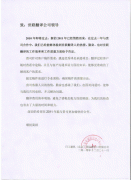世联翻译公司完成丛林探秘-解说稿英文翻译
时间:2018-01-04 08:34 来源:未知 作者:dl 点击:次
| 世联翻译公司完成丛林探秘-解说稿英文翻译
Wild Secrets
Crowned Lemurs: Monarchs of the Pocket Forest
Narration Script 3/11/2005
Timecode Narration
TITLES (0:30)

0:32 On the island of Madagascar live many creatures found nowhere else on earth.
Lemurs are closely related to the ancestors of monkeys, apes and humans.
Some of the rarest species live among the strange limestone formations known as tsingy and it’s here that families of Crowned lemurs live secret lives, ruling over tiny forests among the limestone.
Title: Crowned Lemurs: Monarchs of the Pocket Forest
1:07 Madagascar is the fourth largest island in the world, with an area about the same as that of France.
1:13 It’s famous for its unusual creatures, and one of the rarest is found living only in the dry forests in the far north of the island.
1:25 This is one of the few regions of Madagascar which has, as yet, remained untouched by farming and forestry.
1:35 Trees as tall as 30 metres can still be found growing here.
1:47 It’s as lush as any tropical forest, and the fruits and insects of the treetops support plenty of animal life
1.59 The blue vanga feeds on insects.
2:04 So does the chameleon.
Madagascar has half the worlds chameleon species but it’s another creature that makes Madagascar’s forests unique.
2:26 Only in Madagascar can you find lemurs.
2:35 This species – the crowned lemur - is found only in the forests of this northern region.
2:41 Crowned lemurs prefer to spend their time in the lower canopy of the forest, where they like to feed on fruits.
2:48 The dark crown on the head of this brown male is what gives this species its name.
2:57 Females are greyer.
3:02 These animals are about the size of a cat
3:05 They live in family groups of between 5 and 15 animals, where females are dominant.
3:14 They share the island and some smaller ones nearby with around 50 other lemur species.
3:23 Lemurs are a very special group of creatures, because they can tell us a lot about our own distant ancestors.
3:31 The ancestor of all primates, including lemurs, monkeys and humans, - a “prosimian” - evolved about 60 million years ago, possibly somewhere in Africa.
By that time, Madagascar had already separated from the African continent.
3:53 Some of the early primates probably drifted across the ocean from Africa on vegetation, and were able to become established here.
4:01 There were no monkeys or apes here to compete, so lemurs evolved in isolation, filling many ecological niches.
4:09 Some lemurs grew as large as gorillas, but these all disappeared when humans arrived here about 2000 years ago.
4:20 One of the smallest that still survives is the mouse lemur. It lives just as the first prosimians did, hunting insects at night in the forest.
4:34 Other species, such as this dwarf lemur, evolved feeding on fruits and leaves.
4:44 The Indri evolved to become active during the daytime. It’s the largest of the living lemurs. It’s another vegetarian.
4:54 The Gentle Lemur is one of only three primate species that feed on bamboo, which contains high levels of silica – and cyanide.
5:08 Brown lemurs are about the same size as crowned lemurs.
They’re widely distributed, and there are a number of subspecies.
5:20 This one – Sandfords lemur – is the rarest, found only in the forests of this region.
5:27 Males are characterized by a white beard.
5:30 The female’s face is darker.
5:35 These lemurs are also mainly vegetarian, but occasionally they’ve been seen feeding on eggs and even birds.
5:46 It’s rare to see the little Sportive Lemur during daylight.
5:53 These lemurs don’t live in groups. Males occupy territories by themselves. But these territories overlap with those of 2 or 3 females, with whom they mate.
6:07 Silky sifakas are rare. There are probably less than 1,000 of these animals living in the wild, making them one of the world’s most endangered primates.
6:19 Females give birth every two years, on average. This baby is about a month old.
6:38 The various lemur species avoid competition by different preferences for food, and where and when they feed.
6:55 The crowned lemurs are normally daytime feeders, who tend to prefer the middle part of the forest.
7:05 Sometimes, they simply lick leaves. This may be to ingest salt.
7:15 The forest this male and his family call home is actually very small: only about the size of 2 soccer pitches. And it’s part of a very unusual landscape.
7:29 This is the tsingy: a rocky plateau about 200 square km , an area about twice the size of Paris.
7:48 Its most obvious feature is its spiky rock pinnacles that rise up to 200 metres above the surrounding dry savannah.
8:01 The name comes from a Malagasy word meaning “to hum”. Some say it’s because of the noise the wind makes over the rocks; others say that the rocks hum when they’re struck.
8:16 There are two tsingy regions in Madagascar, both produced by a very special set of circumstances
8:26 Here’s a clue: a fossil of a sea creature. This is limestone
…formed about 150 million years ago as corals grew in shallow seas.
8:43 This was once a huge coral reef where generations of corals, shellfish and other creatures lived, building their skeletons by extracting calcium carbonate from the water.
As the ages passed, more layers of mineral were piled on top of each other, eventually becoming compressed and forming limestone.
9:07 In this region, an ancient upheaval raised the seabed to form a limestone plateau.
9:16 So what carves the unusual shapes of the tsingy? The ancient stone was then exposed to rainwater, which becomes slightly acid when it reacts with carbon dioxide from the air. Landing on the rock, the acid dissolves the tiniest amount.
9:31 Over many thousands of years, the heavy tropical rains in this region carved the limestone into the sharp needle-like landscape known as the tsingy.
9:45 The tsingy is able to store water from these rains, to supply its forests with moisture all year.
9:56 Even when the surrounding savannah is burned to brown, in the dry season, the pocket forests of the tsingy are lush and green.
10:13 But despite the flourishing growth, the abundant water isn’t obvious. The roots of the trees point the way..
10:24 They extend far into the rock.
10:31 The water that carved the tsingy pinnacles also excavated a great network of caves beneath the surface.
10:40 Thousands of years of dripping water and dissolving limestone have covered the roof of this cave with stalactites.
10:58 While the sun burns everything dry above, this underworld is cool, dark and wet.
11:09 The walls reverberate with the sound of running water.
11:28 Although there’s been almost no rain in this region for 6 months, water runs in torrents here.
11:42 Since the last heavy rains water has been seeping through the limestone and running into the caverns.
11:56 The underground rivers flow through a labyrinth of caves beneath the limestone plateau,
12:13 So far more than 100 kilometres of caves been recorded here.
Researchers estimate that the there may actually be 2 or 3 times this many, sustaining the lush forest above.
12:25 Roots from some of the trees, 10 or 20 metres above, reach right down into the damp caverns.
The trees are a living link from the watery darkness to the dry daylight above.
But they’re not the only ones to make use of this secret reservoir of moisture.
13:00 The lemurs of the forest access the underground water supply directly, too.
13:14 This crowned lemur family regularly visits a favourite cave where it can find running water.
Like watering holes everywhere it can be the focus of activity, as different groups of animals come together to share the precious resource.
13:47 Family members drink warily.
13:57 An alarm call announces the presence of invaders.
14:05 It’s another troop of crowned lemurs.
14:14 The newcomers wait their turn.
15.00 Their patience is rewarded as the first family drinks its fill and returns to their forest refuge.
15:39 A group of Sanford’s lemurs has arrived.
16:07 They’re keen for the crowned lemurs to finish, so they can take their place at the water hole.
16:36 Most lemurs are mainly active during the day. But some still forage at night, like their distant prosimian ancestors.
16:53 The crowned lemurs are unusual in that they can be active either during daylight or darkness. In fact they spend up to two hours feeding in the forest canopy almost every night.
17:15 But why they’re active during both day and night, unlike other lemurs, is still a mystery.
17:38 Next morning, something alarms the little family group.
17:58 Another troop of Crowned Lemurs is approaching.
18.09 They mark the trees with their scent. Unlike monkeys, lemurs rely on their sense of smell very heavily, for finding food and for communicating with each other. To do so, they have sensitive wet noses, like dogs.
18:34 The resident lemurs are becoming more agitated and reinforce their own scent marks on the territory
18:54 Eventually, hostilities break out.
19:14 The little forest isn’t big enough for both groups, and the residents are evicted by the newcomers.
19:32 While the new residents, make themselves at home…
the evicted family must find another place to live.
19:55 As the lemurs climb out of their forest, they enter a spiky limestone world.
20:08 The group members keep in touch by calling to each other. This is also how they maintain contact in the dense forest.
20:19 The journey is risky: the rocks are sharp and steep.
20:29 To cope with the razor sharp stone. the lemurs have extra thick padding on their fingers and toes
20:40 They need to be sure-footed: there are drops of 100 metres or more. One slip could be fatal.
21:15 As if the terrain weren’t dangerous enough, there are predators out here.
21:25 The Madagascar harrier is one of the crowned lemurs’ natural enemies.
21:32 In the forest, the lemurs can hide, but here on top of the limestone they’re easily seen. The terrain is difficult to move over quickly, making it hard to flee.
21:54 They hide under an overhang and wait or the predatory bird to move on.
22:19 Time to get out of here.
22.32 The way is often blocked by deep gaps in the rocks, but this is where the crowned lemurs life in the trees comes in handy. They’re superb leapers.
23:04 They’ve spotted a new patch of woodland, about the size of a baseball field.
23:18 It might be nearby, but reaching safety calls for an almost vertical descent down a sheer rock face of 100 metres.
Adult males, mothers and babies alike, this is where their climbing skills are all put to the test.
24:14 But eventually they all arrive safely in the forest.
24:26 The group begins to feed. There don’t seem to be any other tenants in residence. The new home is theirs
24:50 It even comes with its own caretaker.
24:55 The ring-tailed mongoose is no threat. Its prey includes frogs, invertebrates and small mammals, but nothing as large as a crowned lemur and he’s certainly not likely to evict them.
25:11 There’s no telling how long they’ll remain here: but if something forces them to move on, there are many other forests in the tsingy, sustained by the underground water supply.
They may have been rudely deposed, but for now, the family of crowned lemurs are once again monarchs of their secret, pocket-sized domain.
世联翻译-让世界自由沟通!专业的全球语言翻译供应商,上海翻译公司专业品牌。丝路沿线56种语言一站式翻译与技术解决方案,专业英语翻译、日语翻译等文档翻译、同传口译、视频翻译、出国外派服务,加速您的全球交付。 世联翻译公司在北京、上海、深圳等国际交往城市设有翻译基地,业务覆盖全国城市。每天有近百万字节的信息和贸易通过世联走向全球!积累了大量政商用户数据,翻译人才库数据,多语种语料库大数据。世联品牌和服务品质已得到政务防务和国际组织、跨国公司和大中型企业等近万用户的认可。 |























